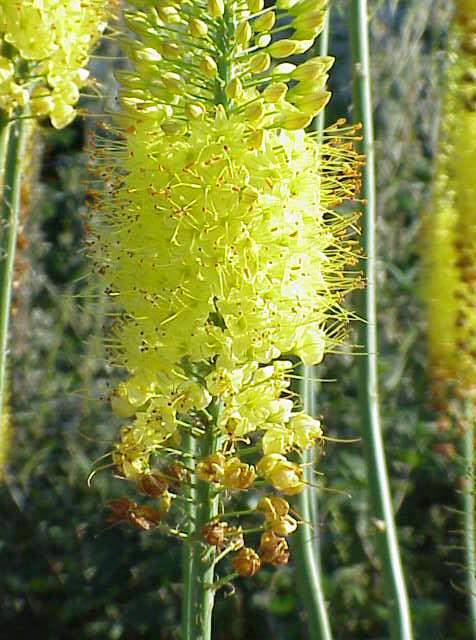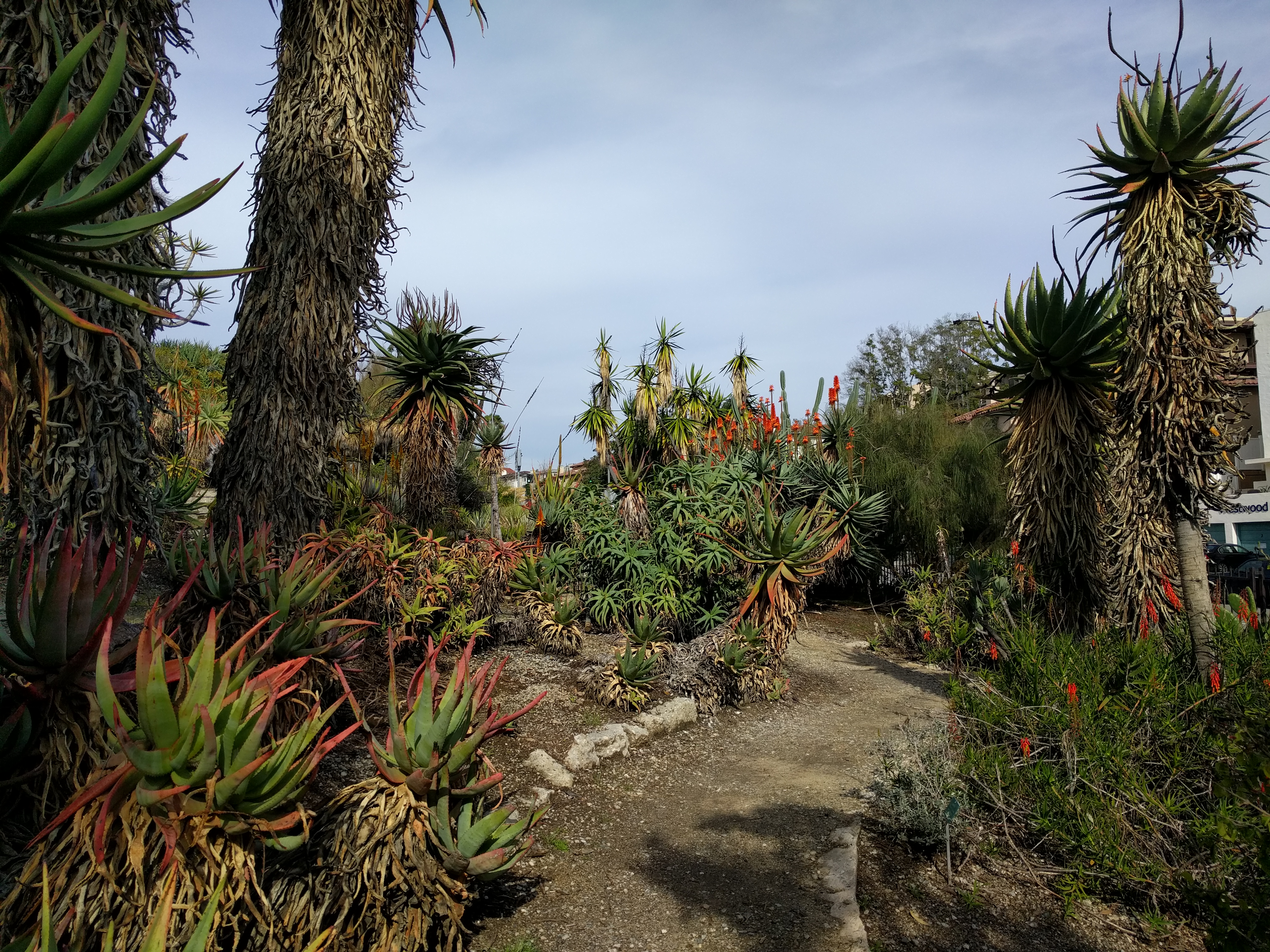|
Aloidendron
''Aloidendron'' is a genus of succulent plants in the subfamily Asphodeloideae. It was split off from the much larger genus '' Aloe'' in 2013. Taxonomy Phylogenetic studies indicated that several species that were traditionally classed as members of the genus '' Aloe'' were genetically distinct and comprised an entirely separate clade. In 2013, the species were accordingly split off as a separate genus, ''Aloidendron'', a decision that was confirmed by Manning et al. in 2014. Species , the World Checklist of Selected Plant Families The World Checklist of Selected Plant Families (usually abbreviated to WCSP) is an "international collaborative programme that provides the latest peer reviewed and published opinions on the accepted scientific names and synonyms of selected pla ... accepts the following species: References Asphodeloideae Asphodelaceae genera Taxa named by Alwin Berger {{Asphodelaceae-stub ... [...More Info...] [...Related Items...] OR: [Wikipedia] [Google] [Baidu] |
Aloidendron Dichotomum
''Aloidendron dichotomum'', formerly ''Aloe dichotoma'', the quiver tree or kokerboom, is a tall, branching species of succulent plant, indigenous to Southern Africa, specifically in the Northern Cape province of South Africa, and parts of Southern Namibia. Naming Known as ''choje'' to the indigenous San people, the quiver tree gets its English common name from the San people practice of hollowing out the tubular branches of ''Aloidendron dichotomum'' to form quivers for their arrows. The specific epithet ''"dichotomum"'' refers to how the stems repeatedly branch into two ("dichotomous" branching) as the plant grows. This species was moved to the genus '' Aloidendron'' as ''Aloidendron dichotomum'' in 2013. Related species Three separate species, ''A. dichotomum'', '' A. pillansii'' and '' A. ramosissimum'' inhabit the same arid areas of the Richtersveld and the Namib Desert around the South African-Namibian border. The three have been given different ratings on the IUCN R ... [...More Info...] [...Related Items...] OR: [Wikipedia] [Google] [Baidu] |
Aloidendron Barberae
''Aloidendron barberae'', formerly ''Aloe bainesii'' and ''Aloe barberae'', also known as the tree aloe, is a species of succulent plant in the genus ''Aloidendron''. It is native to South Africa northwards to Mozambique. In its native climes this slow-growing tree can reach up to high and in stem diameter. ''Aloidendron barberae'' is Africa's largest aloe-like plant. The tree aloe is often used as an ornamental plant. Its tubular flowers are rose pink (green-tipped); it flowers in winter and in its natural environment is pollinated by sunbirds. Taxonomy ''Aloidendron barberae'' was first collected and submitted for classification by Mary Elizabeth Barber, who was a plant collector in the former Transkei. She sent specimens of the plant and its flowers to the Kew Gardens, Royal Botanic Gardens at Kew, where in 1874 it was named by William Turner Thiselton-Dyer (1843–1928) in her honor. Subsequently, it was also found in KwaZulu-Natal by the well known traveller, explorer an ... [...More Info...] [...Related Items...] OR: [Wikipedia] [Google] [Baidu] |
Aloe Bainesii
''Aloidendron barberae'', formerly ''Aloe bainesii'' and ''Aloe barberae'', also known as the tree aloe, is a species of succulent plant in the genus ''Aloidendron''. It is native to South Africa northwards to Mozambique. In its native climes this slow-growing tree can reach up to high and in stem diameter. ''Aloidendron barberae'' is Africa's largest aloe-like plant. The tree aloe is often used as an ornamental plant. Its tubular flowers are rose pink (green-tipped); it flowers in winter and in its natural environment is pollinated by sunbirds. Taxonomy ''Aloidendron barberae'' was first collected and submitted for classification by Mary Elizabeth Barber, who was a plant collector in the former Transkei. She sent specimens of the plant and its flowers to the Royal Botanic Gardens at Kew, where in 1874 it was named by William Turner Thiselton-Dyer (1843–1928) in her honor. Subsequently, it was also found in KwaZulu-Natal by the well known traveller, explorer and painter Th ... [...More Info...] [...Related Items...] OR: [Wikipedia] [Google] [Baidu] |
Aloe Pillansii
''Aloidendron pillansii'', formerly ''Aloe pillansii'', the giant quiver tree or bastard quiver tree, is a large, branching species of succulent plant indigenous to southern Africa. It is regarded as critically endangered. Description ''Aloidendron pillansii'' grows up to 15 m in height. It branches dichotomously, and superficially resembles ''Aloidendron dichotomum''. It can be distinguished by its paler, wider, recurved leaves, and its taller, more sparsely branched growth form. The branches are made of a fiber that is soft and penetrable, which allows them to store water. Because of its habitat, the ''Aloidendron pillansii'' can shed itself of its branches and leaves if they deem detrimental to its survival. Its round, bright yellow flowers are pendant, and hang down below the rosette (unlike those of the other tree aloes). They appear in Spring. Distribution It is found around the border between Namibia and South Africa, where its natural habitat is upper mountain slo ... [...More Info...] [...Related Items...] OR: [Wikipedia] [Google] [Baidu] |
Aloidendron Pillansii
''Aloidendron pillansii'', formerly ''Aloe pillansii'', the giant quiver tree or bastard quiver tree, is a large, branching species of succulent plant indigenous to southern Africa. It is regarded as critically endangered. Description ''Aloidendron pillansii'' grows up to 15 m in height. It branches dichotomously, and superficially resembles ''Aloidendron dichotomum''. It can be distinguished by its paler, wider, recurved leaves, and its taller, more sparsely branched growth form. The branches are made of a fiber that is soft and penetrable, which allows them to store water. Because of its habitat, the ''Aloidendron pillansii'' can shed itself of its branches and leaves if they deem detrimental to its survival. Its round, bright yellow flowers are pendant, and hang down below the rosette (unlike those of the other tree aloes). They appear in Spring. Distribution It is found around the border between Namibia and South Africa, where its natural habitat is upper mountain slo ... [...More Info...] [...Related Items...] OR: [Wikipedia] [Google] [Baidu] |
Aloidendron Tongaense
''Aloidendron tongaense'', formerly ''Aloe tongaensis'', is a species of plant in the genus ''Aloidendron'', native to sandy tropical coastal forests in KwaZulu-Natal, at the border between Mozambique and South Africa. Description and taxonomy It grows as a massive, branching tree, almost as tall as its larger and more widespread relative, the giant tree aloe ''Aloidendron barberae ''Aloidendron barberae'', formerly ''Aloe bainesii'' and ''Aloe barberae'', also known as the tree aloe, is a species of succulent plant in the genus ''Aloidendron''. It is native to South Africa northwards to Mozambique. In its native climes th ...''. It looks similar to ''A. barberae'', however its leaves are slightly more yellow, and it produces bright red flowers.Reynolds, GW 1966. The aloes of tropical Africa and Madagascar. Trustees of the Aloes of South Africa Book Fund. Mbabane, Swaziland. References Endangered flora of Africa Flora of Mozambique Trees of South Africa Asphode ... [...More Info...] [...Related Items...] OR: [Wikipedia] [Google] [Baidu] |
Aloidendron Ramosissimum
''Aloidendron ramosissimum'', formerly ''Aloe ramosissima'', is a species of flowering plant in the family Asphodelaceae. It is endemic to the Richtersveld at the border between South Africa and Namibia, where it grows on desert slopes and in ravines. Its common name is maiden's quiver tree. Its habitat may be threatened by mining and overgrazing. It is similar to ''Aloidendron dichotomum'', but bushier and shorter in stature, rarely exceeding 60 centimeters in height. It might not be a distinct species; it has been treated as a variety and a subspecies In biological classification, subspecies is a rank below species, used for populations that live in different areas and vary in size, shape, or other physical characteristics (morphology), but that can successfully interbreed. Not all species ... of ''A. dichotomum''. Gallery Aloe ramosissima pm.JPG, Form Aloe ramosissima - South Africa.JPG, In flower References Asphodeloideae Vulnerable plants Flora of Nam ... [...More Info...] [...Related Items...] OR: [Wikipedia] [Google] [Baidu] |
Aloidendron Eminens
''Aloidendron eminens'', formerly ''Aloe eminens'', is a species of succulent plant in the genus ''Aloidendron'', endemic to Somalia. Description and taxonomy It grows as a massive, branching tree of roughly 35 feet in height. It looks similar to its close relative, the giant tree aloe (''Aloidendron barberae'') of South Africa, however its leaves are slightly more yellow, and it produces bright red flowers. Distribution and habitat It is endemic to Somalia, where it is indigenous to the northern area around Erigavo. Here its habitat is rocky limestone slopes and forested ravines, where it often occurs on forest verges. It is threatened by habitat loss Habitat destruction (also termed habitat loss and habitat reduction) is the process by which a natural habitat becomes incapable of supporting its native species. The organisms that previously inhabited the site are displaced or dead, thereby .... References Asphodeloideae Endemic flora of Somalia Endangered flora of ... [...More Info...] [...Related Items...] OR: [Wikipedia] [Google] [Baidu] |
Aloidendron Sabaeum
''Aloidendron sabaeum'' is a species of flowering plant in the subfamily Asphodeloideae. It is native to Saudi Arabia and Yemen Yemen (; ar, ٱلْيَمَن, al-Yaman), officially the Republic of Yemen,, ) is a country in Western Asia. It is situated on the southern end of the Arabian Peninsula, and borders Saudi Arabia to the Saudi Arabia–Yemen border, north and .... References Asphodeloideae {{Asphodelaceae-stub ... [...More Info...] [...Related Items...] OR: [Wikipedia] [Google] [Baidu] |
Asphodeloideae
Asphodeloideae is a subfamily of the monocot family Asphodelaceae in the order Asparagales. It has previously been treated as a separate family, Asphodelaceae ''sensu stricto''. The family Asphodelaceae has now been proposed to be a nomen conservandum, and the proposal has been recommended for ratification in 2017. In that case, Asphodelaceae will have priority over Xanthorrhoeaceae. This is reflected in the APG IV family lists. The subfamily name is derived from the generic name of the type genus, ''Asphodelus''. Members of group are native to Africa, central and western Europe, the Mediterranean basin, Central Asia and Australia, with one genus ('' Bulbinella'') having some of its species in New Zealand. The greatest diversity occurs in South Africa. The genera ''Aloe'', ''Asphodelus'', and ''Kniphofia'' are perhaps best known from their use in horticulture as ornamental plants. Description The Asphodeloideae are distinguished by a general presence of anthraquinones, s ... [...More Info...] [...Related Items...] OR: [Wikipedia] [Google] [Baidu] |
Aloe Tongaensis - RSA
''Aloe'' (; also written ''Aloë'') is a genus containing over 650 species of flowering succulent plants.WFO (2022): Aloe L. Published on the Internet;http://www.worldfloraonline.org/taxon/wfo-4000001341. Accessed on: 06 Nov 2022 The most widely known species is ''Aloe vera'', or "true aloe". It is called this because it is cultivated as the standard source for assorted pharmaceutical purposes. Other species, such as ''Aloe ferox'', are also cultivated or harvested from the wild for similar applications. The APG IV system (2016) places the genus in the family Asphodelaceae, subfamily Asphodeloideae. Within the subfamily it may be placed in the tribe Aloeae.Stevens, P.F. (2001 onwards).Asphodelaceae. ''Angiosperm Phylogeny Website''. Retrieved 2016-06-09. In the past, it has been assigned to the family Aloaceae (now included in the Asphodeloidae) or to a broadly circumscribed family Liliaceae (the lily family). The plant ''Agave americana'', which is sometimes called "America ... [...More Info...] [...Related Items...] OR: [Wikipedia] [Google] [Baidu] |
Aloe Gillilandi - Botanischer Garten München-Nymphenburg - DSC08141
''Aloe'' (; also written ''Aloë'') is a genus containing over 650 species of flowering succulent plants.WFO (2022): Aloe L. Published on the Internet;http://www.worldfloraonline.org/taxon/wfo-4000001341. Accessed on: 06 Nov 2022 The most widely known species is ''Aloe vera'', or "true aloe". It is called this because it is cultivated as the standard source for assorted pharmaceutical purposes. Other species, such as ''Aloe ferox'', are also cultivated or harvested from the wild for similar applications. The APG IV system (2016) places the genus in the family Asphodelaceae, subfamily Asphodeloideae. Within the subfamily it may be placed in the tribe Aloeae.Stevens, P.F. (2001 onwards).Asphodelaceae. ''Angiosperm Phylogeny Website''. Retrieved 2016-06-09. In the past, it has been assigned to the family Aloaceae (now included in the Asphodeloidae) or to a broadly circumscribed family Liliaceae (the lily family). The plant ''Agave americana'', which is sometimes called "America ... [...More Info...] [...Related Items...] OR: [Wikipedia] [Google] [Baidu] |


